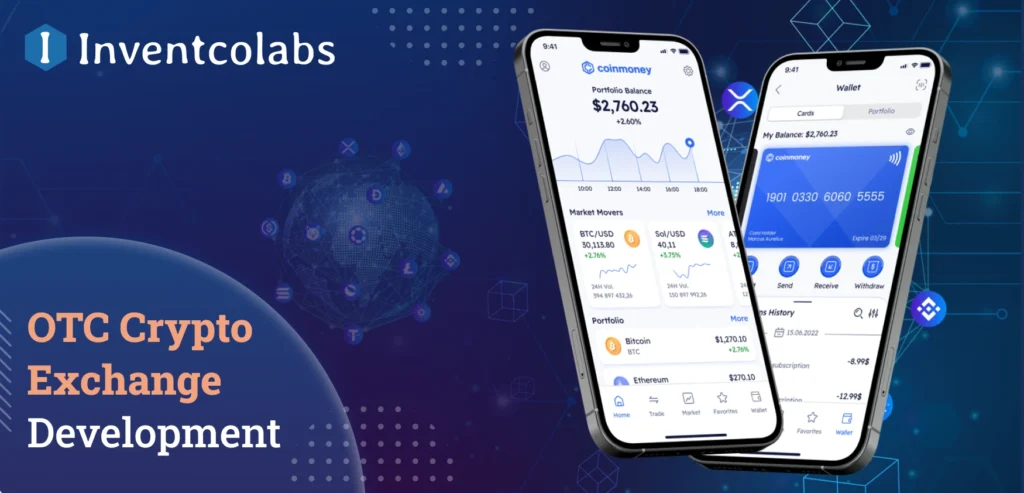Ever since its invention in 2008, Blockchain technology has huge impact all across the Internet. And today it has successfully reached a position where a lot of companies across the globe are working to integrate this technology into their business. People have embraced the concept of this technology as it allows them to complete transactions even without using plastic or cash money.
Initially, blockchain was a dedicated Bitcoin cryptocurrency, however, today this technology enjoys a number of applications in other fields as well. This is why in today’s times starting a Cryptocurrency exchange firm can be a great idea to make a good deal of money.
In this article, we cover several aspects of cryptocurrency app development, such as how it works, the core functionalities to integrate, how to create the exchange app, how much the development costs and a lot of such crucial factors have been discussed here. Let’s begin with an understanding of how the app works.
How Does The App Work?
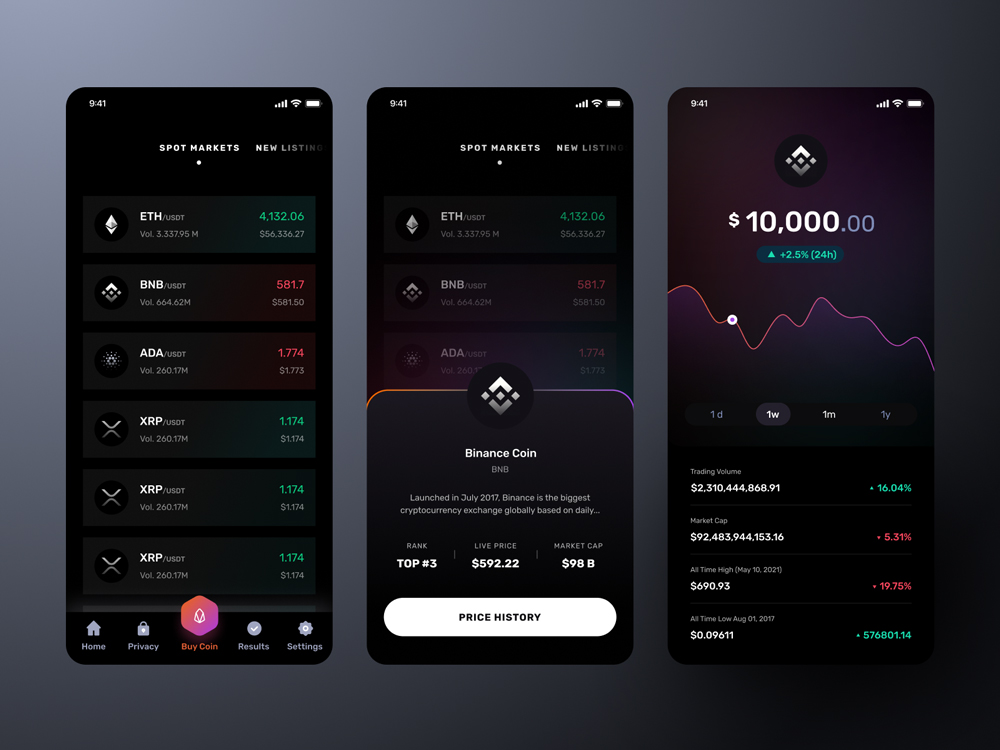
There are a number of cryptocurrency exchange apps in the market using Blockchain technology, such as Binance and Coinbase. These platforms serve everyone from beginners to expert Crypto traders, however often there is a dilemma over how these exchange apps actually work.
Keeping it simple, Blockchain technology essentially stores data at different places, making the entire chain of data unalterable. This space can be used by anyone to create a secure chain of data. The reliability of secured data is not dependent on anyone, hence making it less vulnerable to threats. In the cryptocurrency exchange market, this technology works wonders. The success of this technology resulted in the emergence of numerous cryptocurrencies and at present, there are already 700 digital currencies in the market. It is this vastness of this market that opens a plethora of resources that can be traded or purchased by a user.

For instance, to give an understanding of Binance’s working, the app offers two types of trading, i.e.
1) Basic Trading for beginners and
2) Advance trading for cryptocurrency’s pro traders.
Also, the app has not made it mandatory for app users to add KYC, as a lot of people are conscious of their privacy. However, the app does place a limit of only two bitcoins in a day, with an intention to protect money investments from any kind of malicious activities from a fraud user.
The users keen on completing their KYC formalities can go ahead following the procedure and they have a limit to withdraw 100 bitcoins in a day. This two-factor authentication by the Binance app ensures the security of transactions made using their cryptocurrency exchange platform. A user can freely choose between cryptocurrency trade options and this is one of the many reasons why Binance is popular among pro-crypto traders as well as new crypto trade learners.
Benefits of Starting a Crypto Exchange
Here are some of the benefits of starting a crypto exchange that makes it a lucrative venture:
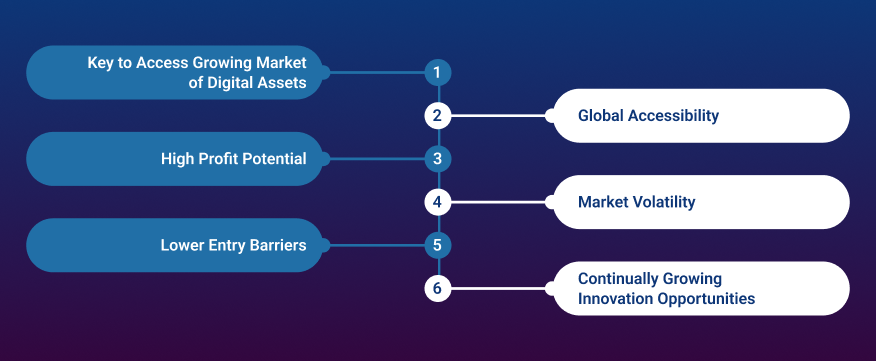
1. Key to Access Growing Market of Digital Assets
The demand for digital assets like cryptocurrencies is expanding at an immediate speed. The revenue from the digital asset market is anticipated to generate US$56,420.00 million in 2023. The market is on the cusp of blossoming, with a projected CAGR of 16.15%, this revenue is foreseen to achieve US$102,700.00 million by 2027 according to Statista.
The growing popularity of digital marketing assets makes it a profitable venture to start a cryptocurrency exchange app like Binance.
2. High Profit Potential
Rising demand for cryptocurrencies resulted in the global popularity of crypto exchange platforms. People are continually looking for reliable and secure platforms.
Furthermore, crypto exchange presented businesses with monetization opportunities such as listing and trading fees. Furthermore, you can offer additional value-added services to make sure your profit soars.
3. Lower Entry Barriers
Starting a crypto exchange application has a lower disruption in the path compared to traditional financial institutes. These applications operate on a decentralized network meaning all the transactions will take place between you and the trader. This eliminates the need for mediators such as banks or other government bodies. This eases the regulatory burdens enabling entrepreneurs to focus on the growth of the platform rather than worrying about compliance.
Furthermore, starting an exchange app requires no physical presence which is mandatory for traditional financial institutions. This means lower capital is required to enter the market.
So, all you have to do is partner with a reliable crypto exchange development company and build a secure and scalable application.
4. Global Accessibility
The popularity of cryptocurrencies is maturing around the world, without being restricted by geographical boundaries. The crypto exchange marketplace is hosted on the cloud, therefore it can be accessed around the world with the internet as the medium.
The global reach expands the user base and, ultimately the revenue which is the end goal of every entrepreneur.
5. Market Volatility
The cryptocurrency market symbolizes volatility. The price of cryptocurrencies inflates more commonly compared to traditional money markets. The price of a cryptocurrency could be amplified by 10 times which is very rare in the traditional market. This volatility presents entrepreneurs with opportunities to amplify their revenue multiple times.
Market volatility can also present some challenges, therefore plan carefully to make sure your revenue soars but with minimal disruptions.
6. Continually Growing Innovation Opportunities
The cryptocurrency market is continuously maturing, meaning the market is expected to present opportunities that are unknown at present. For example, these applications are expected to go beyond cryptocurrency trading and look for ways to offer new financial services such as lending, and borrowing.
The early adopters of this growing demand for platforms will expect to make a profit in multiple ways which are expected to expand with time.
Features Of Cryptocurrency Exchange App
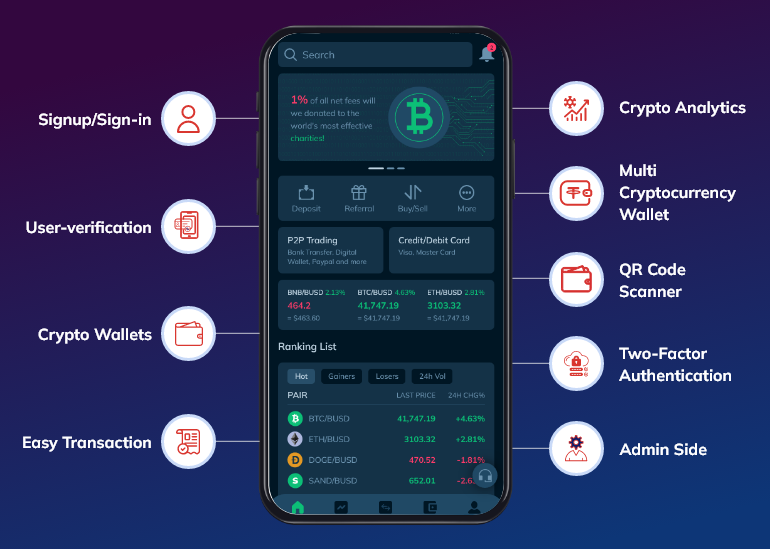
Signup/Sign-In
In the case of Cryptocurrency app development, the signup page design should be precisely thought through. After all, it’s the first entry that must shield the app from unauthorized login attempts. Thus, it’s best secured with two-factor authentication to keep malicious attacks at bay.
User-Verification
The Crypto exchange app must have functionality that verifies registered users and accordingly offers them access. Like, in case of the Binance app verifies different users by placing a withdrawal limit for unauthorized users.
Crypto Wallets
These Crypto exchange apps have in-app crypto wallets enabling users to deposit or withdraw money to make a transaction. But it is crucial to ensure that the Crypto wallets are created in a manner that the users are not allowed to make any transaction beyond set limits.
Easy Transaction
The best attribute of crypto apps is the security and privacy it offers in transactions. The app created by the on-demand crypto app developer must ensure the same. The transaction feature integrated in the Crypto app enables the users to carry out a trade and sell out crypto goods easily.
Crypto Analytics
It is vital for the Crypto exchange app to show various graphs/trends followed in the crypto market. As the statistics displayed in analytics strongly influence the decision-making of that trade.
Multi-Cryptocurrency Wallet
A crypto wallet is a software program enabling users to receive and send digital currencies. As a Crypto exchange app is being created, consider these:
- System and User Wallets There are different types of wallets like Hot & Cold, Desktop and mobile, multi-currency wallets, and more. A crypto exchange platform’s money can be stored in a system wallet.
- Withdrawal & Deposits Users are allowed to deposit/withdraw amounts via ATM, email, QR code, transfer, etc. Usually, the trading & deposit of digital currencies occur without account verification however to withdraw the amount, the user’s account verification is a must.
- Create Transaction Every Crypto exchange app user must be allowed to buy and later sell cryptocurrency to other users. And to ensure that it happens in real time, the app must focus on smooth and speedy transactions.
Read Also: A Comprehensive Guide For EWallet Application Development
Admin Side
The admin panel of the Crypto exchange app enables Crypto goods holder firms to manage and monitor the trade. As per the access levels, the admins can be given a provision to see User ID, Name, Email, and transaction details like transaction ID, amount, description, etc. The panel enables the admins to change trading fees, add new cryptocurrencies, manage cryptocurrency listing, fund the accounts in the time or tickets & support issues.
QR Code Scanner
This feature is quite useful for apps that are needed to transfer money while traveling, hence it will be useful for Crypto exchange apps.
Two-Factor Authentication
When two-factor authentication is added to an app it raises the app standards. Especially in Crypto-exchange apps, it is important to add a second authentication layer apart from login using a username and a password.
Now that we have covered the essential features to be integrated into a Crypto exchange app, next let’s discuss the steps involved to create such an app platform.
Read Also: A Complete Guide To NFT Marketplace Development
Types of Crypto Exchanges
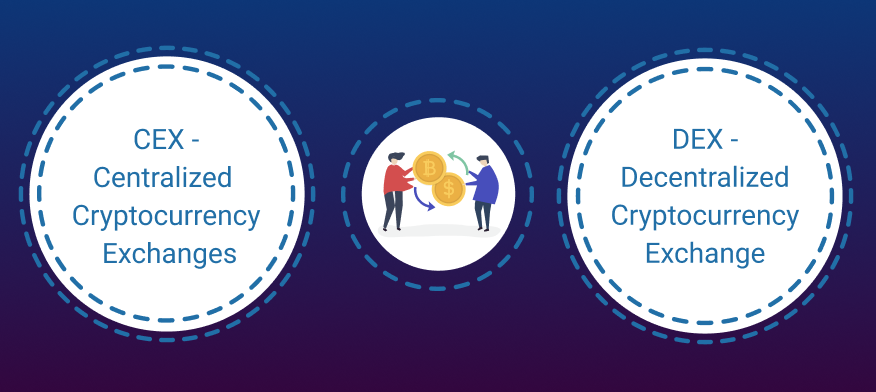
1. CEX – Centralized Cryptocurrency Exchanges
Centralized Cryptocurrency Exchanges or CEX marketplaces work likewise to the stock exchange. They are centralized meaning they are managed by the institutions that have created them.
How does centralized cryptocurrency exchange work? They function as a link between the customers and sellers of digital assets to enable secure trading.
They maintain centralized management over all their functions such as order books, and matching buyers and sellers with similar requirements. CEX platforms maintain an exchange wallet where users can deposit funds. These wallets are maintained by the exchange platform authorities and, therefore, often vilified for security-related matters.
Binance, Gemini, Coinbase, etc. are some of the most commonly known CEX marketplaces.
2. DEX – Decentralized Cryptocurrency Exchange
A decentralized cryptocurrency exchange (DEX) is a peer-to-peer marketplace where all trading happens between customers and sellers directly. This means there is no necessity for centralized authorities like banking institutes, brokers, or payment processes.
How does decentralized cryptocurrency exchange work? Decentralized crypto exchange applications work on blockchain technology. Blockchain is a distributed digital ledger that empowers each participant to view and confirm the authenticity of each transaction.
This signifies that DEXs are more secure and transparent than centralized exchanges, which are managed by a single institution. Furthermore, you’re trading with a smart contract, which is a piece of code that runs on the blockchain and completes the trade automatically when specific requirements are satisfied.
Furthermore, DEX Marketplace doesn’t ask users to deposit their funds in the wallet. Instead, they have complete control over their funds and complete transactions directly from their wallets.
Some well-known examples of decentralized cryptocurrency exchanges include Uniswap and SushiSwap.
Monetization Strategies of Crypto Exchange Application
Crypto exchange marketplaces use several monetization strategies to make revenue. Let’s have a discussion of the crypto exchange application monetization strategies;
1. Trading Fee
Trading fee is one of the most commonly used monetization strategies to generate revenue. The trading fee is determined either on the grounds of transaction value or a fixed percentage for each transaction. It relies upon the crypto exchange app developer to choose which monetization strategy is appropriate for them.
For example, one of the leading centralized crypto exchange platforms Binance charges 0.1% of the trading fee for each transaction.
2. Listing Fee
Listing fee is another typically utilized monetization strategy. It is an amount that each cryptocurrency project or token issuer pays to list their token on the crypto exchange.
The listing fee is exclusively determined by the exchange platform. It can be estimated on the basis of factors like token popularity, price, and more. For example, Binance charges a specific listing fee for listing new cryptocurrencies on their platform.
3. Withdrawal Fee
Withdrawal fee refers to a fee the user is required to pay when transferring cryptocurrency from an exchange wallet to an external wallet. This fee differs from one platform to another and may be distinct for each cryptocurrency.
The withdrawal fee supports the crypto exchange marketplace to cover the transaction cost that surfaces while making a withdrawal.
4. Margin Trading
Margin trading refers to the process of trading the borrowed funds. The users can borrow the funds from an exchange platform and trade them to make a profit. The exchange platform levies an interest on the borrowed funds making it an advantageous opportunity for both the user and the marketplace.
5. Staking
Staking monetization strategies help the users to make a profit by holding the cryptocurrencies on the exchange marketplace for a specific time period. The exchange platform charges a fee for the staking rewards.
For example, the Binance crypto exchange marketplace has staking services on popular cryptocurrencies like Bitcoin, Ethereum, and Cardano. The users can stack these currencies and Binnacle will charge a certain fee on the profit made through staking.
Steps To Develop Cryptocurrency Exchange Platform
A cryptocurrency exchange platform like Binance requires to follow these steps, such as:
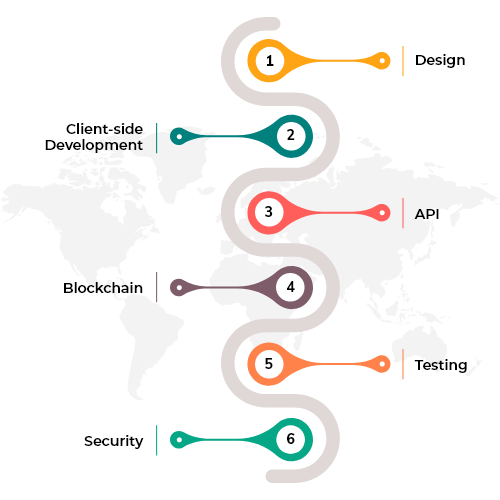
-
-
Design-
An app’s design is what the client gets to interact with first as they start using the app, and hence it is important to ensure the beauty and usability of the app design. It’s a good idea to incorporate trending best practices for UX/UI design while taking product requirements into the account. The app designing module consists of Wireframes (it’s the base of future design where its key features are implemented) and next is Prototype (the descriptive visualization of the user’s interaction with the app that enables preventing possible UX-related issues. -
Client-side Development-
The Crypto exchange app’s web part consists of client-side logic of all the website pages and it is based on a previously created design. The front-end app developers are responsible for the app design by using HTML, CSS markups, and Javascript programming language that includes Vue.js, React.js, and Angular.js frameworks. -
API-
This is the back-end part of the app that’s not visible to the end user. It’s the app’s server part responsible to perform the app’s internal logic and to handle basic functionalities, such as User Authentication & Authorization, Newsletter, Admin Panel’s server-side function, users’ cryptocurrency bets & deals, and APIs which can be used by third-party organizations. -
Blockchain-
This stage is about handling the actual data processing and storing about trade between the users in a secure environment. Blockchain technology ensures no alteration by any party. -
Testing-
Testing is a crucial part of the app development process as it allows to discovery and elimination of any bugs, or errors hidden in the app so that the app free of any loopholes can be launched in the app market. -
Security-
The cryptocurrency exchange app is responsible to store sensitive user information and hence it is a must to ensure that it is properly secured so as to prevent any kind of data leaks or hacking attacks. The app data can be secured through:
-
Secure Architecture – During the app’s back-end development, pay attention to creating a secure way to store and exchange confidential information. Here the key components of exchange are located on different servers and they interact via dedicated channels. Also, the encryption keys are located at dedicated secured servers.
-
User Authentication Two-factor authentication by generating a one-time token is crucial to forbid unauthorized login to the user account. This also allows users to receive alerts regarding logins to their account specifying location and IP address. The encrypted data exchange takes place through the newest algorithm SHA-256, which currently can’t be hacked. This algorithm generates a hash, i.e. a unique signature of text that is altered each time the initial message is edited. This way it is possible to check whether the sent hash matches the received one and to find case the data was edited. As a hash is not an encryption, thus the original message is impossible to decode.
-
-
How To Make Crypto Exchange Platform Secure Like Binance & Coinbase?
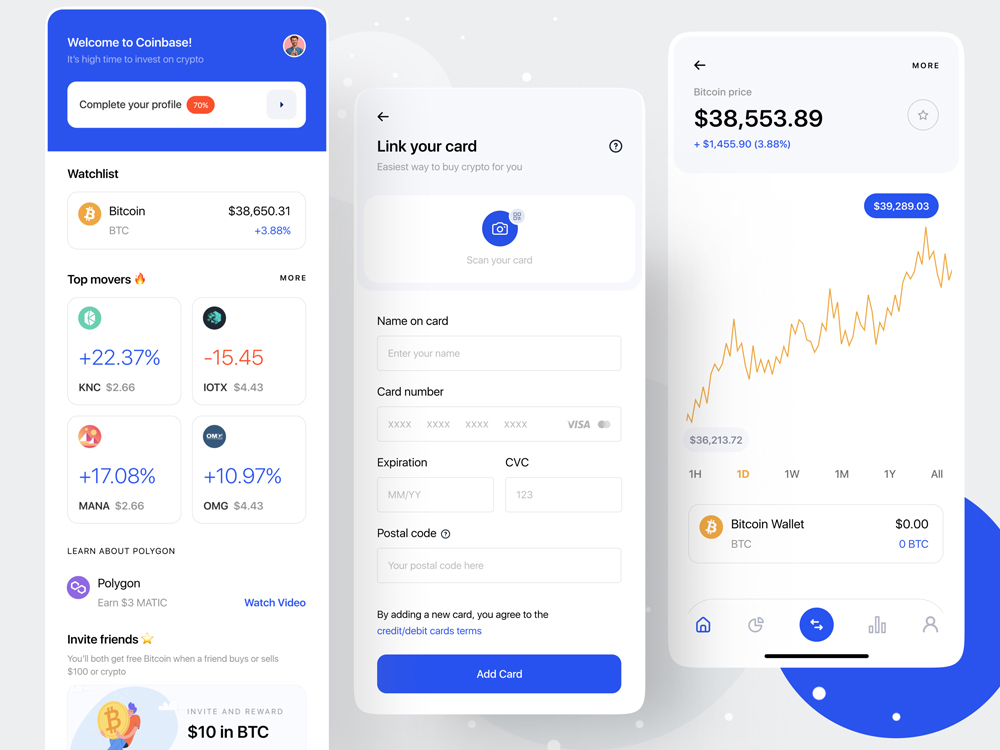
So far we learned the different technicalities to start a crypto exchange platform, now let’s find out how apps like Binance or Coinbase make their platform secure for their users who deal with millions of cryptocurrencies on an everyday basis and save the platform from hacking attacks.
For instance, Coinbase stores 98% of customer funds in offline mode, and that way it prevents any chances of theft or loss. It’s not only for offline funds but Coinbase even distributes bitcoins across the globe in a number of safe deposit boxes & vaults. For data security, Coinbase has employed several steps to protect users’ privacy. Instead of storing private data on servers, this platform keeps data disconnected from the internet and this makes it difficult to hack. For added security, data is split through redundancy and it is encrypted with AES-256 before it’s copied on FIPS-140 USB devices and paper backups – just like funds, these USBs are also spread around the globe.
Coinbase also asks all users’ accounts to have a two-step verification procedure. For authentication, the users receive a code from their phones to log in beside the usual username and password. Coinbase is also known to follow best practices of payment domains like it runs the traffic on the website over an HTTPS encrypted SSL. All wallets & private keys used by Coinbase come with AES-256 encryption.

Challenges Faced With Crypto Currency Exchange App Development
Rise In Competition
Ever since the concept of Bitcoin was introduced, the cryptocurrency market witnessed huge demand and this has led to increased competition in the digital currency exchange domain. Every day new businesses are entering the domain to make their mark in this industry and reap its benefits. With Binance and Coinbase already ruling the Crypto exchange world, there are still a few ways for you to enter this space and carve your niche. For instance,
- It can help to have a Cryptocurrency exchange app with seamless UX and UI in both the app and website.
- A business can benefit by taking advantage of the scope that there is a space of entry in the mobility domain of the crypto exchange market.
- Adding a huge amount of Crypto assets to the Listing can work wonders.
- Try offering both Crypto-to-Crypto and Fiat-to-Crypto forms of Trading as it is in the Bitcoin exchange app.
- It’s a great idea to have a decentralized Crypto exchange system in Expansion Plan.
Scalability
For a new Crypto exchange app platform, it can be daunting to get the platform prepared for a plethora of users who enter and interact within the space almost daily. Essentially, the common scalability issue can lead to numerous challenges, such as slow transaction processing time, frequent lags in the platform, delayed fund transfers, etc. The only way to ensure that the platform is prepared to take the load of a large number of active users making millions of transactions on a daily basis is to have a robust backend architecture with excellent load balancing.
When it comes to the Crypto or Bitcoin industry, there is a huge concern over how secure this whole concept is. However, there are several laws and regulations to safeguard the Crypto journey and make it a memorable exchange for your users.
Next, it is time to head to the most important segment, i.e. development cost of the Crypto exchange platform. Let’s figure out this segment.
How Much Does It Cost To Build A Cryptocurrency Exchange App?
When it comes to the cost to create a Crypto exchange app, all we can say is it is not this easy to figure out the exact cost to create a platform like a Crypto exchange app, as a lot goes in the creation of an app, especially as it comes to Crypto exchange app, as here special attention needs to be given to make the app secure for the users, while keeping the app design simple, so it can be used by all the crypto traders.
If the app is crafted with basic functionalities and for a single platform, it should be on a lower scale of this cost estimate, and when the app is integrated with advanced functionalities and created for more than one platform, it takes the cost towards a higher scale.




